“Pushing 60, Trying to Look 30,” Nicole Kidman’s New Bold Style Is Deemed Age-Inappropriate

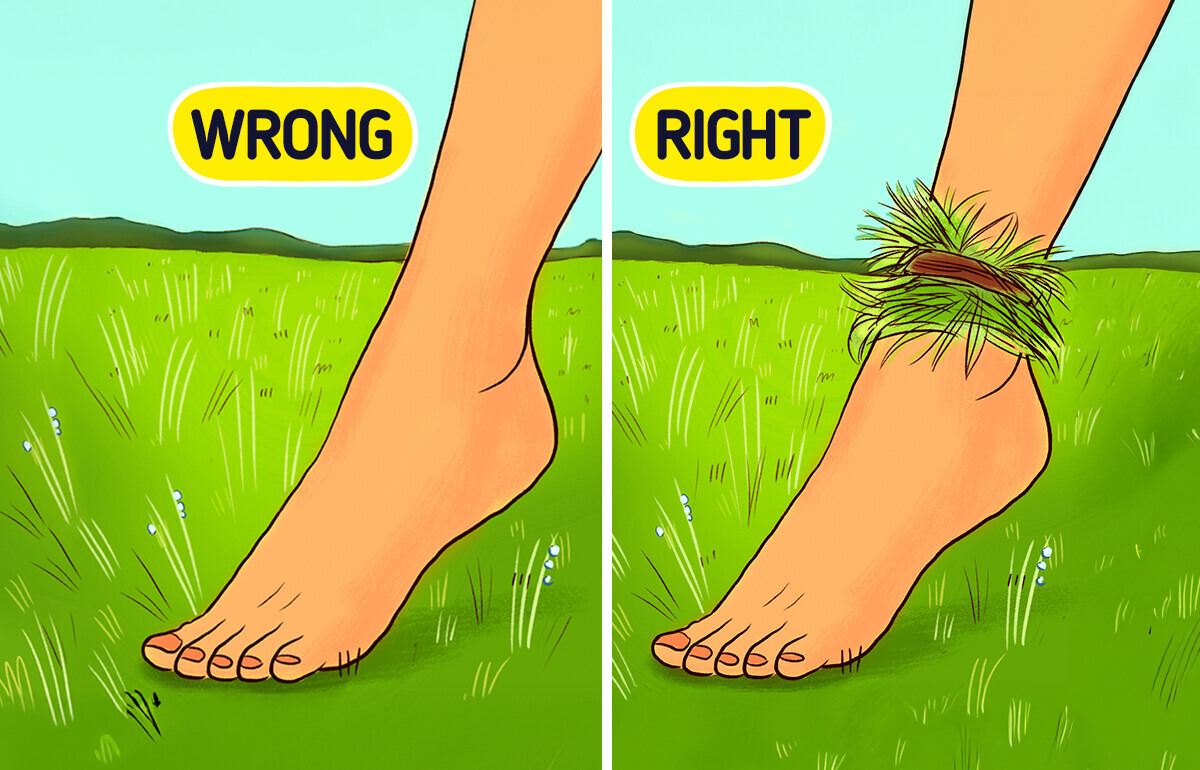
Even after hearing several warning messages, people may think that nothing serious is ever going to happen to them. But this leaves us vulnerable and unprepared in dangerous situations. No, emergencies don’t happen all that often, but we still need to learn how to react so our chances of survival are good.
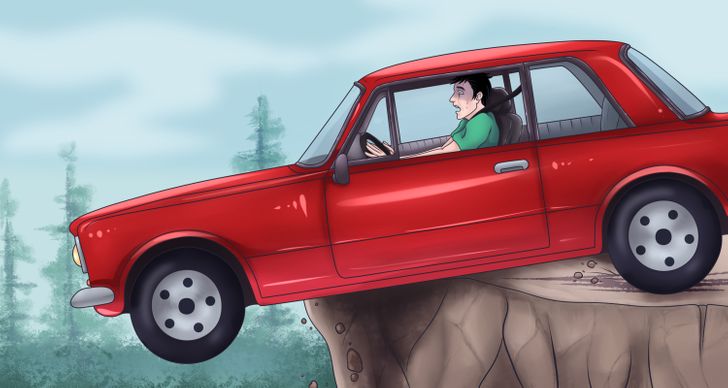
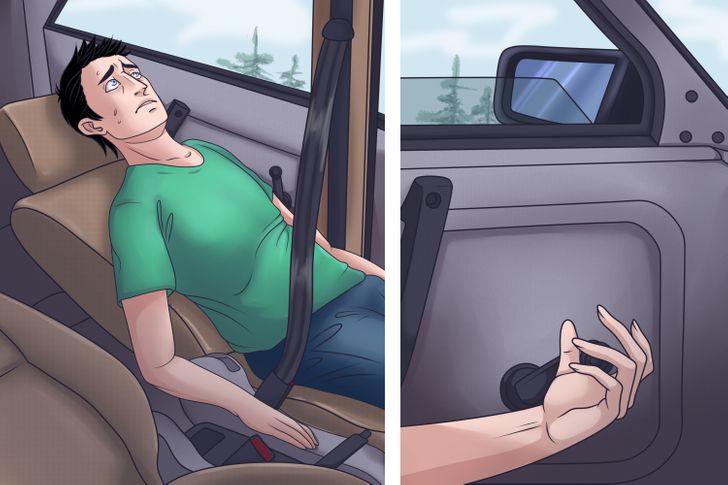
4. If the front of your car is hanging down, head toward the back.
Gently recline your seat and shift your weight toward the rear to keep the car balanced. Slowly crawl into the back seat, staying low and steady. Once you’re there, carefully open the back door and exit.
5. Open all windows and unlock the doors.
Creating multiple exit points gives everyone a better chance of escaping quickly and safely — especially if the car shifts or doors jam. Make sure all passengers can get out at once, if needed.
6. Have kids in the car? Prioritize their safety.
Wait until at least one adult has safely exited the vehicle. Then, carefully pass infants or small children out through the nearest safe exit — ideally into the arms of someone already outside.
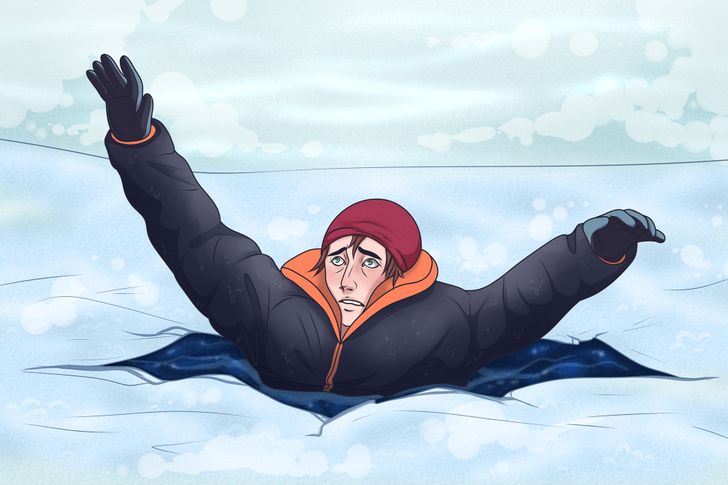
1. Control your breathing — don’t gasp underwater.
Cold shock can trigger an involuntary gasp, which is dangerous if your head is submerged. Stay calm and focus on steady breathing. This reaction usually passes within 1 to 3 minutes as your body adjusts.
2. Keep your head up and body out of the water as much as possible.
The more you’re exposed to icy water, the faster your body loses heat. Staying partially above the surface increases your survival window — which typically ranges from 10 to 45 minutes before unconsciousness can set in.
3. Ditch anything weighing you down.
Remove heavy items like backpacks or tools. They’ll make it harder to float or pull yourself out — and every bit of energy and buoyancy counts.
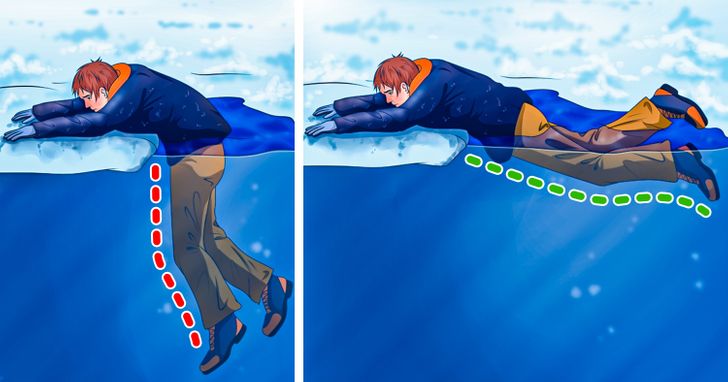
4. Get horizontal and kick your legs.
Position your body as flat as possible against the surface of the water. Start kicking your legs to help propel yourself forward onto the ice.
5. Use your forearms and elbows to pull up.
Aim to lift your upper body out of the water first. Press your forearms and elbows onto the ice to get a stable grip.
6. Pause briefly to let water drain from your clothes.
Once your chest is on the ice, take a few seconds. Letting water drain from your clothing will lighten your body and make it easier to crawl out.
7. Roll — don’t stand — across the ice.
To avoid breaking the ice again, roll away from the hole instead of standing up. Then, quickly find the safest route back to land or your vehicle. If possible, remove wet clothing to prevent rapid heat loss.
8. Stimulate blood flow with light movement.
Once safe, do gentle movements like push-ups or jumping in place to warm your body and improve circulation — but don’t overexert if you’re already freezing.
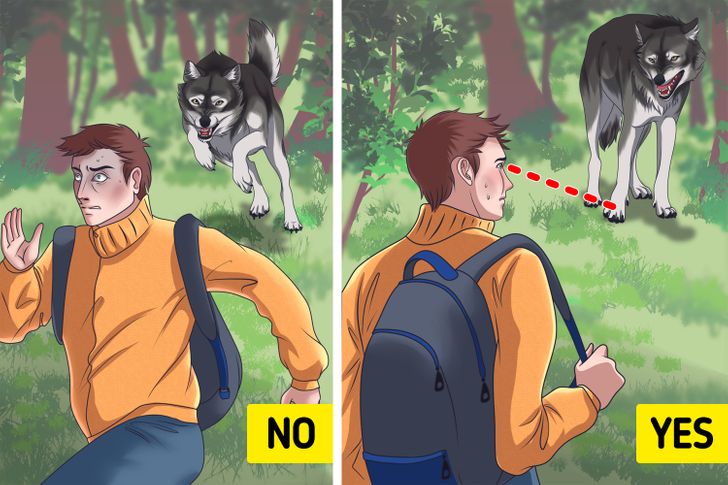
1. Don’t run — stay calm and non-threatening.
Running can trigger a wolf’s natural instinct to chase. Instead, stand your ground without appearing aggressive. Move slowly and deliberately.
2. Avoid direct eye contact.
Staring into a wolf’s eyes may be seen as a challenge. Keep your gaze low and your head slightly lowered to show you’re not a threat.
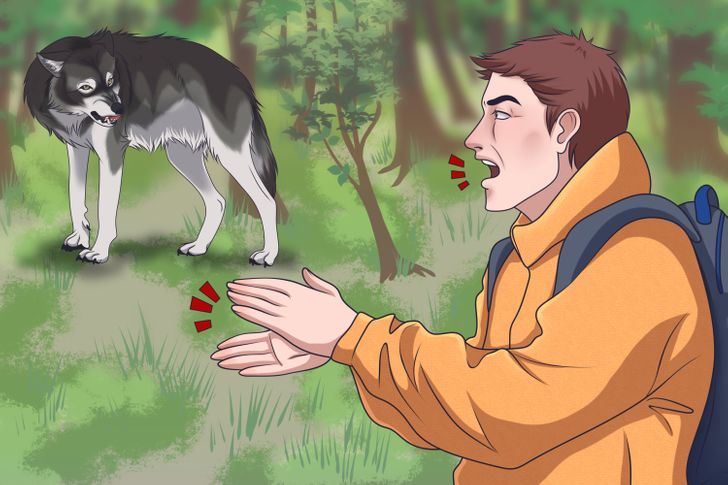
3. If the wolf comes closer, appear larger and louder.
Raise your arms above your head to look bigger. Clap your hands and shout confidently. It might not scare the wolf, but it could confuse or delay it — buying you time to act.
4. Back away slowly without turning your back.
Stay calm and balanced. Keep your eyes on the wolf, but avoid direct eye contact. Move backward gradually without sudden movements.
5. If possible, climb a tree — but don’t lose sight of the wolf.
Trees offer a safe vantage point. Keep watching the animal as you climb to avoid being caught off guard.
6. If a wolf attacks, curl into a protective ball.
Cover your head and neck with your arms. Stay as still and compact as possible to protect vital areas.
7. Defend yourself by aiming for the face.
Throw sticks, rocks, or anything within reach at the wolf’s face. A sudden hit may make it reconsider the confrontation and retreat.
8. If you’re in a group, form a circle.
Stand close together, facing outward. This helps you monitor the wolf’s movement from all directions and appear more intimidating as a group.
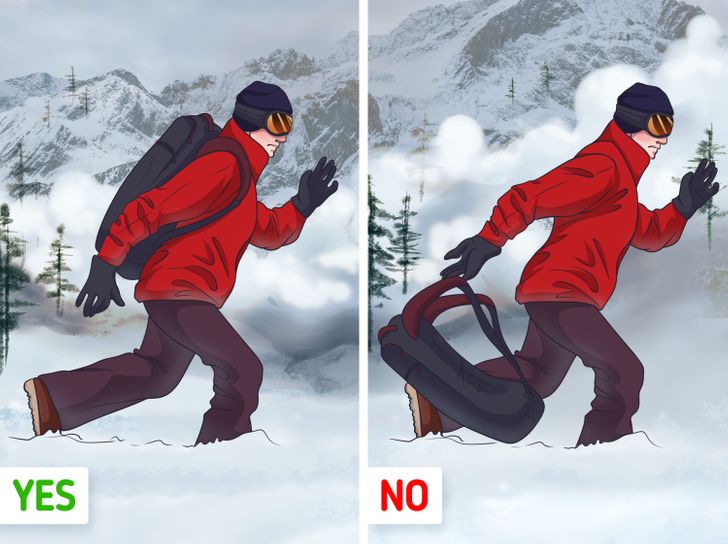
1. Avoid skiing in high-wind areas.
Strong winds can shift snow dangerously and trigger avalanches. Stick to marked trails and check local avalanche forecasts before heading out.
2. Protect your mouth and lighten your load.
Cover your mouth with a scarf or glove to prevent snow inhalation. Drop heavy gear like skis or poles, but keep your backpack on — it can act as a cushion and shield.
3. Grab onto something solid.
If an avalanche starts, try to hold onto a sturdy tree, rock, or anything anchored to the ground to avoid being swept away.
4. “Swim” with the avalanche.
Try to stay on top of the moving snow by using a swimming motion. It can help keep you closer to the surface and improve your chances of survival.
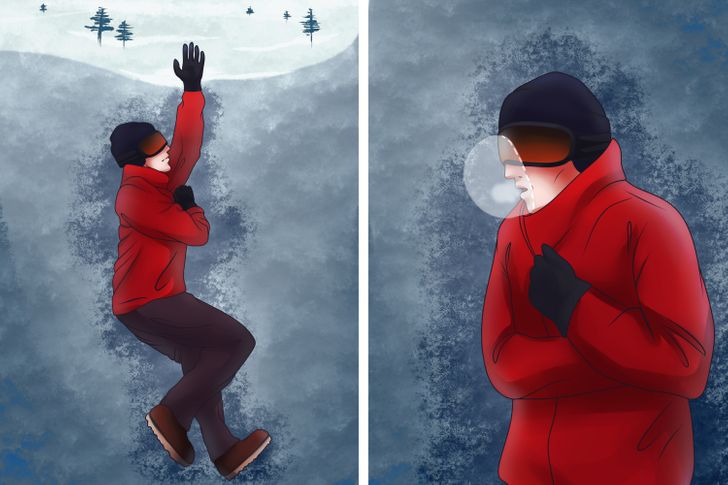
6. Raise one arm above your head as you’re pulled under.
If you’re being buried, thrust one arm upward and wiggle it. This can help create an air tunnel and may allow rescuers to spot you. It also helps you orient yourself — since it’s easy to lose track of “up” beneath the snow.
7. Create a breathing space around your face.
Once the snow stops, it hardens like concrete. Use your hands to dig a small air pocket around your mouth and nose to give yourself room to breathe for the next critical minutes.
8. Always wear an avalanche beacon or radar device.
Before you hit the slopes, attach a transceiver or radar tag to your body or gear. It dramatically increases your chances of being located quickly by a rescue team.
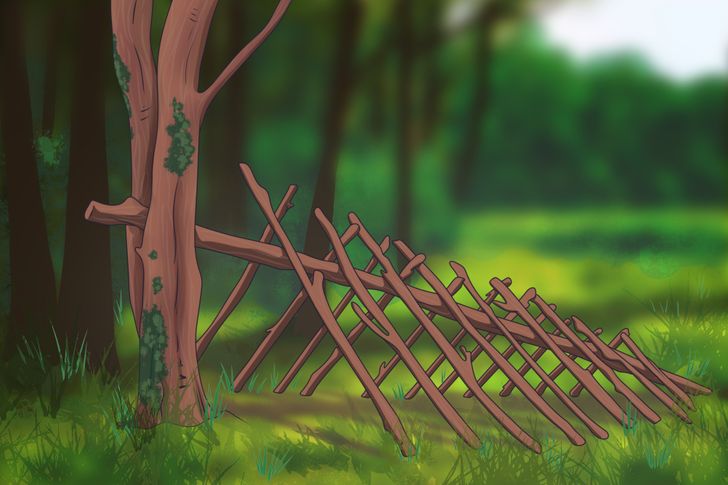
1. Use the S-T-O-P method if you realize you’re lost.
S-T-O-P stands for:
Stop moving to avoid making things worse.
Think about your situation calmly.
Observe your surroundings for landmarks or dangers.
Plan your next move wisely instead of panicking.
2. Try to retrace your steps.
Look around for signs of where you came from — footprints, snapped branches, or familiar sights. Move carefully to avoid losing more energy or direction.
3. Pick one direction and stick to it.
Wandering randomly increases your risk. Choose a single direction to follow. Leave notes or markings (like arrows on trees or written messages) indicating your path and the time you passed through — it can help rescuers find you.
4. Build a basic shelter if you’re still lost after a while.
Find a long, straight branch and lean it against a tree to form a sloped frame. Lay shorter branches along it at a 45° angle, then cover the structure with large leaves or foliage to keep warm and dry.
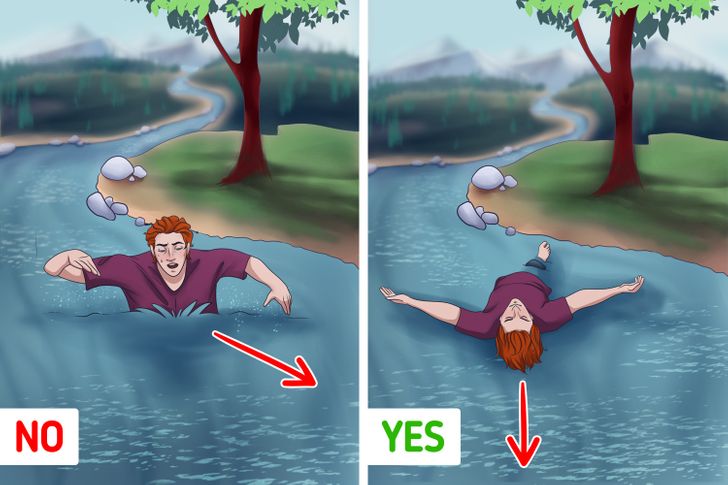
1. Swim diagonally to the shore.
If you’re caught in a strong current or river, don’t fight it by swimming straight back. Instead, move at a 45° angle toward the shoreline. This uses less energy and increases your chances of escape.
2. Never swim upstream.
Trying to swim against the current will quickly exhaust you. Let the flow carry you until you find a safer spot to exit.
3. Float on your back with feet downstream.
Position yourself so that your feet point downstream and your head stays upstream — this protects your head from hitting obstacles. Once you reach calmer water, roll over and swim diagonally toward the shore.

1. Avoid shallow rivers where anacondas may be hiding.
These snakes often lurk in slow-moving, muddy water. If you spot one, don’t approach — watch from a distance to see if it’s tracking your movement. Stay calm and back away slowly.
2. If an anaconda grabs you, don’t exhale.
Resist the urge to breathe out. Every exhale makes your chest smaller, and the snake will tighten its grip with each breath you lose. Hold your breath as long as safely possible to avoid giving it an advantage.
3. Bite the end of the snake’s tail if you can reach it.
This may sound extreme, but biting the sensitive tip of the tail can cause intense pain and force the anaconda to release you.
4. If you can’t reach the tail, fight back hard.
Use any nearby object — a rock, stick, or even your fists — to strike the snake. Anacondas prefer prey that doesn’t resist. If you make it clear you’re not an easy target, it may release you and retreat.
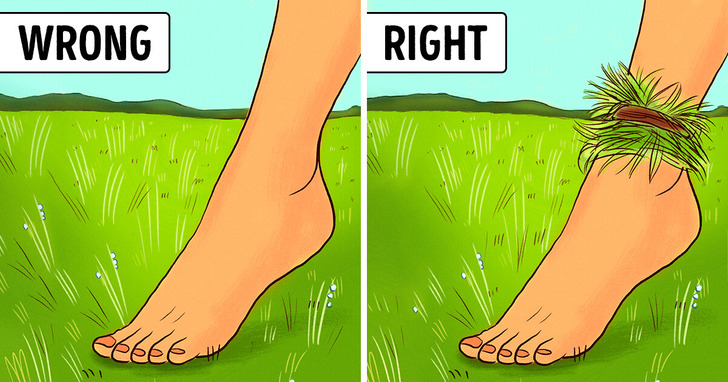
This method was traditionally used by Australian Aboriginal people during long journeys without water. Before sunrise, they would collect dew by forming balls of dried grass or wrapping it around their ankles, allowing the moisture to gather as they walked.
What was the most extreme situation you’ve ever been in? How do you usually manage feelings of panic?











